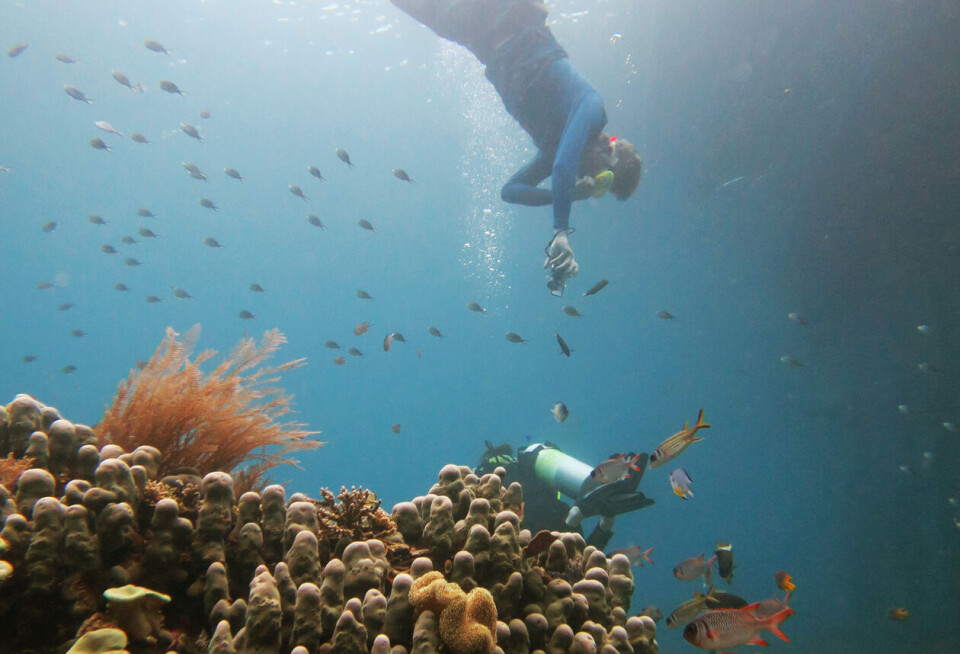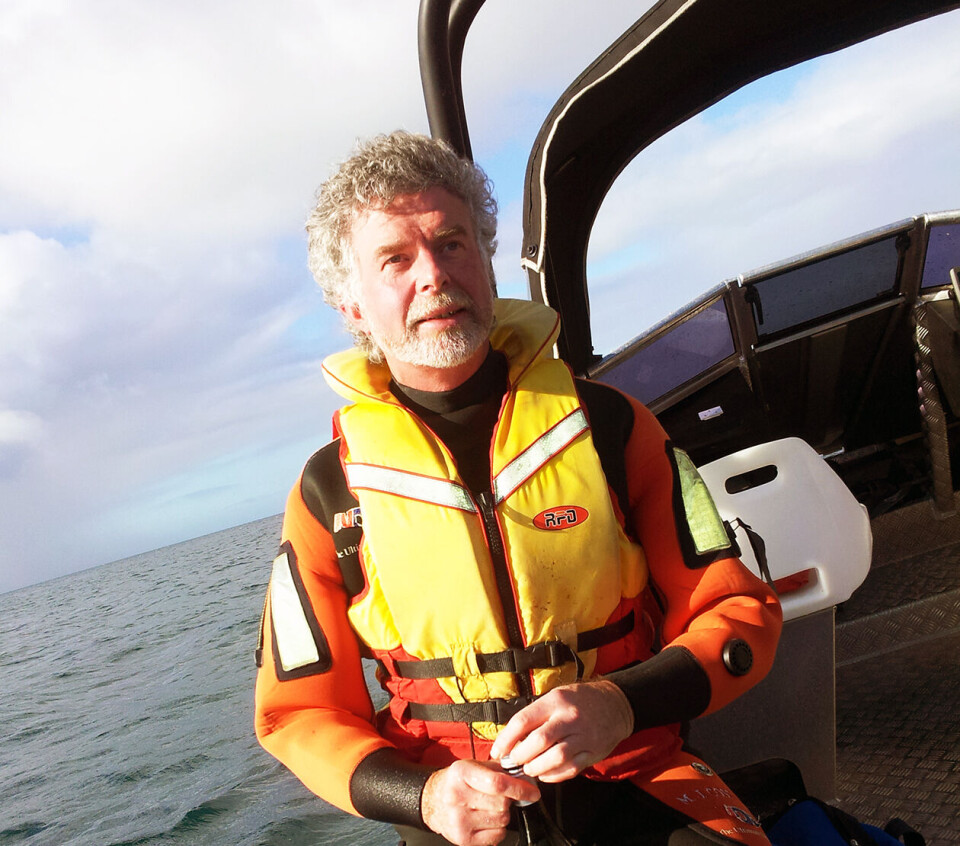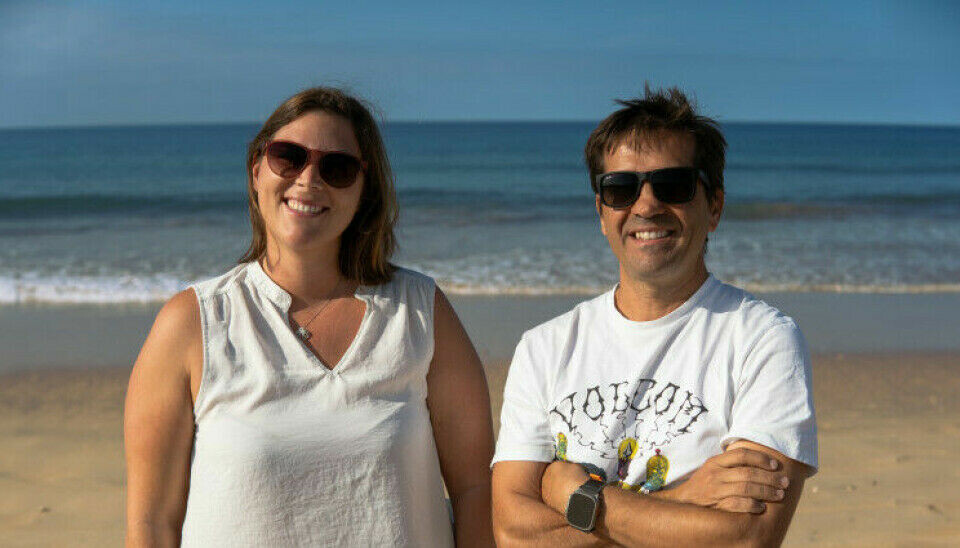THIS CONTENT IS BROUGHT TO YOU BY Nord University - read more

Ocean heatwaves last longer in deep water
This summer has been marked by temperature records in the ocean, especially in the North Atlantic. Research now shows that such marine heatwaves are more intense and last longer down in the depths.
“Marine heatwaves occur increasingly often due to climate change, much like we see extreme weather phenomena more often on land," ocean researcher Mark Costello says.
He notes that it is important to remember that a heatwave in the north does not necessarily mean very high temperatures.
He is behind a new study that has examined how marine heatwaves affect the ocean below the surface. The study was conducted in collaboration with researchers from countries including Portugal and Australia, as well as colleague Jorge Assis.
By combining actual measurements and models, the researchers have examined global marine heatwaves from 1993 to 2019, down to a depth of 2,000 metres.

“Marine heatwaves and their effects have so far mostly been examined in surface waters, and we have had little knowledge of how the heatwaves behave down in the depths,” Costello says.
The study was published in Nature Climate Change in August this year.
Can last up to two years
A marine heatwave is statistically defined as a relative change in water temperature. Specifically, a period of five days where the temperature has been higher than 90 per cent of the average for the last three decades.
“Our work shows that heatwaves last longer in deep water, particularly from 50 to 200 metres. At such depths, it's usually quite cold. Warming could therefore increase activity and lead to more growth and productivity in marine life at such depths," Costello says.
He explains that if marine organisms are acclimated to colder temperatures, any warming could induce stress. This stress, in turn, could lead to decreased growth and lower productivity.

In some places, researchers found that heatwaves were 19 per cent warmer at these depths compared to the surface.
Heatwaves also lasted longer the deeper down one went. It could take up to two years before the water temperature returned to normal.
The researchers also examined how areas most prone to heatwaves overlap with areas where animal and plant life are already exposed to temperatures at the edge of what they can tolerate.
They found such overlapping areas in 22 per cent of the world's oceans. This is particularly true for areas at great depths, from 1,000 to 2,000 metres.
Increases productivity in cold waters
This summer, record high temperatures have been reported in the North Atlantic, and many are concerned about how this will affect life in the ocean.
“Since ‘heatwave’ is a relative and not an absolute term, we can have heatwaves also in polar regions. This means that unlike heatwaves with extremely high temperatures that can be lethal in the air and in the ocean, such as in the Mediterranean, heatwaves in northern areas will not necessarily kill organisms,” Costello says.
He says it is complex to calculate what effect such heatwaves have on organisms in the water, especially since they have not yet studied the actual temperatures in the heatwaves.
“Without knowing the actual temperatures, we can't say which scenario is most likely. The effect of such underwater heatwaves will vary locally, according to the temperature that was in the water before," he says.
If the water is at one degree and the temperature doubles to two degrees, it will still be quite cold.
In water that is already warm, heatwaves could lead to oxygen deficiency, which will stress and perhaps kill organisms.
“In water that is normally cold, which is typical for temperate and polar regions, heatwaves could have a positive effect,” he says.
Affects body size
Previous research at Nord University has shown that increasing temperatures lead to an increase in the number of species at higher latitudes and a decline at lower latitudes.
“Globally, we see an increase in the number of species up to an average annual temperature of 20 degrees. If it gets warmer than this, we see a decline,” Costello says.
Changes in species diversity can locally affect both fisheries and ecosystems.
“But on a larger geographical scale, marine species will adapt to climate change by moving their distribution,” he says.
Research at Nord University has shown that many marine animal species become smaller in size as the ocean gets warmer. But here too there are variations.
Among some Arctic species, such as Greenland halibut (Reinhardtius hippoglossoides), a small increase in temperature can lead to an increase in body size.
“For Greenland halibut, a doubling in temperature, from zero to two degrees to two to four degrees, will give a ‘boost’ in the growth rate. In such very cold areas, it's the cold that sets the limit for growth,” Costello says. “Looking ahead, we need observations on how species respond to temperature in deeper seas to know if this subsurface warming will have positive or negative affects on ocean productivity and biodiversity.”
References:
Fragkopoulou et al. 'Marine biodiversity exposed to prolonged and intense subsurface heatwaves', Nature Climate Change, vol. 13, 2023. DOI: 10.1038/s41558-023-01790-6 (Abstract)
Gordó-Vilaseca et al. Over 20% of marine fishes shifting in the North and Barents Seas, but not in the Norwegian Sea, PeerJ 11, 2023. DOI: 10.7717/peerj.15801
Gordó-Vilaseca et al. Three decades of increasing fish biodiversity across the north-east Atlantic and Arctic Oceans, PNAS, 2023. DOI: 10.1073/pnas.2120869120
Lavin et al. Warm and cold temperatures limit the maximum body length of teleost fishes across a latitudinal gradient in Norwegian waters, Environmental Biology of Fishes, 2022. DOI: 10.1007/s10641-022-01270-4

This content is paid for and presented by Nord University
This content is created by Nord University's communication staff, who use this platform to communicate science and share results from research with the public. Nord University is one of more than 80 owners of ScienceNorway.no. Read more here.
More content from Nord University:
-
Kateryna's university has been bombed three times – but she's still teaching
-
5 things you didn't know about smart cities in the Arctic
-
AI sparked an idea that could improve road safety in Norway
-
These algae have been adapting for hundreds of millions of years
-
Could traces of bacteria in water combat salmon disease?
-
Bladderwrack in animal feed has the potential to reduce methane emissions




































